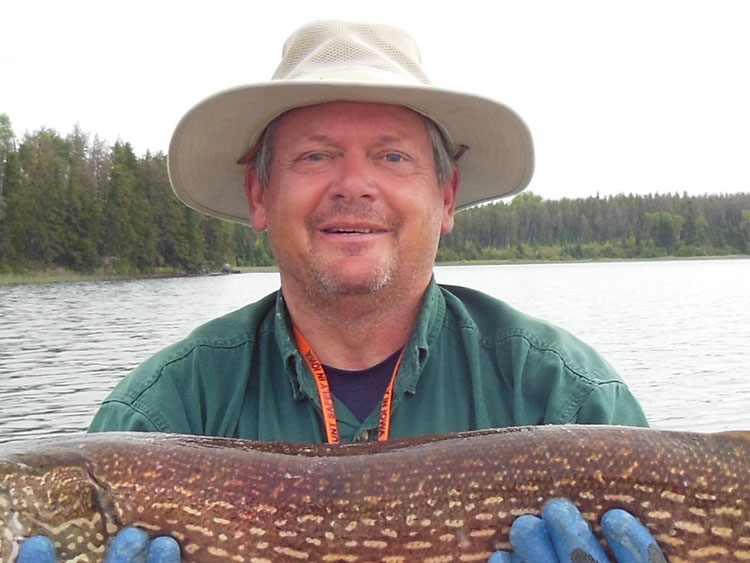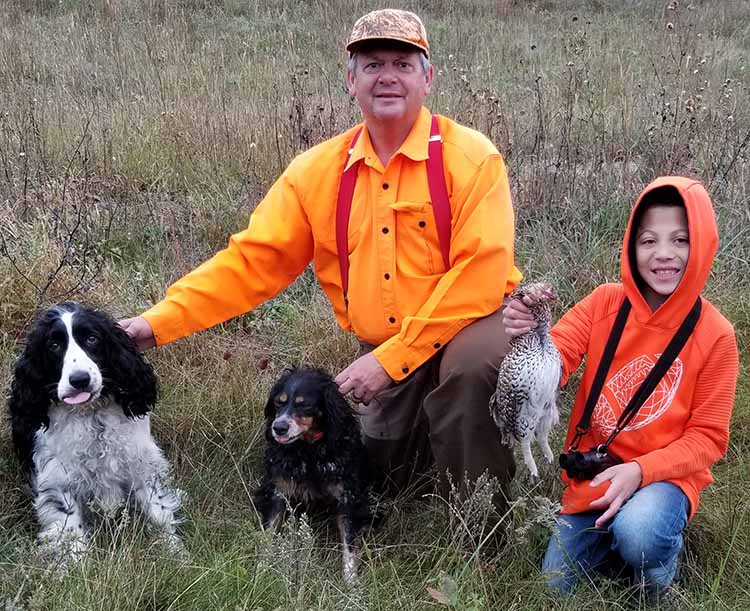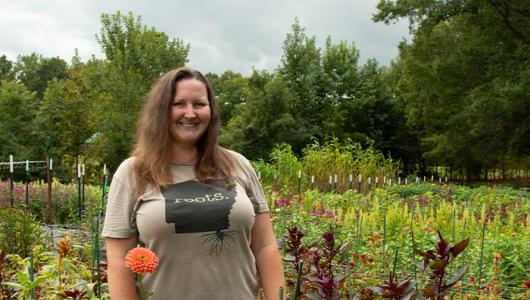In this Ask the Expert, Richard “Rich” Straight, agroforester at USDA’s National Agroforestry Center in Lincoln, Nebraska, answers a few questions about how combining trees with production agriculture can help farmers manage their land, livestock, and other natural resources.
Rich combines university research with landowner experiences to provide conservation planning resources to help people learn how to use agroforestry practices and techniques on their farm or operation.

What is agroforestry and why should I consider using it on my farm?
Agroforestry is way of managing land that combines agriculture, trees, and in some cases, livestock to address conservation needs, protect farms from drought and storms, and increase farm profitability. Because agroforestry usually includes growing more than one kind of crop and sometimes raising livestock, it adds diversity to production systems. This diversity helps manage environmental and financial risk.
What are some common agroforestry practices?
There are five main agroforestry practices:
- Windbreaks are linear plantings of trees and shrubs to enhance, protect, and benefit people, livestock, and soil and water conservation.
- Riparian Forest Buffers are natural or re-established streamside forests that include trees, shrubs, and grasses. Their primary purpose is to intercept runoff carrying sediment and chemicals before it enters a wetland, lake, or stream. They can include trees and shrubs that produce a harvestable crop along with providing conservation benefits.
- Alley Cropping is growing ag crops between widely-spaced rows of trees or shrubs. Examples are hay between pecan trees, wheat between chestnut trees, or strawberries between Aronia bushes.
- Silvopasture is managing trees and grazing livestock on the same land. These systems are intensively managed for both forest products and forage, providing both short- and long-term income sources.
- Forest Farming (Multi-Story Cropping) is producing high-value crops under the protection of a managed forest canopy. Examples of these crops are goldenseal, mushrooms, black cohosh, and ginseng. It’s important to note that multi story cropping is much more than harvesting crops growing naturally or in the wild. It involves active production management.

Which types of ag production best benefit from agroforestry?
Many kinds and sizes of farms and woodlands can utilize agroforestry practices. It really depends on the goals and objectives of each landowner.
What financial assistance is available for agroforestry practices?
The Natural Resources Conservation Service (NRCS) has several programs that support agroforestry. The most popular for agroforestry practices is the Environmental Quality Incentives Program. Each state manages and prioritizes their programs for addressing local concerns.
Another program is jointly supported by the NRCS and Agricultural Marketing Service, AMS. The Agriculture Management Assistance (AMA), available in 16 states, helps agricultural producers manage financial risk through diversification, marketing or natural resource conservation practices. NRCS administers the conservation provisions while AMS and Risk Management Agency implement the production diversification and marketing provisions.
The Farm Service Agency offers financial assistance through CRP and CREP, which have both historically strongly supported windbreaks and riparian forest buffers.
One additional resource is the Sustainable Agriculture, Research, and Education, SARE, which offers several grant programs that include agroforestry practices.
Where can producers get more information or help if interested in agroforestry?
People can learn more about agroforestry by visiting the USDA National Agroforestry Center website, the Association for Temperate Agroforestry website, the University of Missouri Center for Agroforestry website, or the Savanna Institute website.
There are additional conservation decision tools available on farmers.gov.
· The Conservation at Work series shares the benefits of conservation practices directly from the farmers, ranchers, and forestland owners through new 90-second videos.
· Explore different types of conservation issues that might impact the productivity or natural resources on your farm, ranch, or forest and get connected with free assistance from our conservation experts through the Conservation Concerns Tool.
Service Center staff continue to work with agricultural producers via phone, email, and other digital tools. Because of the pandemic, some USDA Service Centers are open to limited visitors. Contact your Service Center to set up an in-person or phone appointment. Additionally, more information related to USDA’s response and relief for producers can be found at farmers.gov/coronavirus.
Laura Crowell is a regional public affairs specialist for USDA’s Farm Production and Conservation Business Center serving states in the Northwest and Northern Corn Belt.


